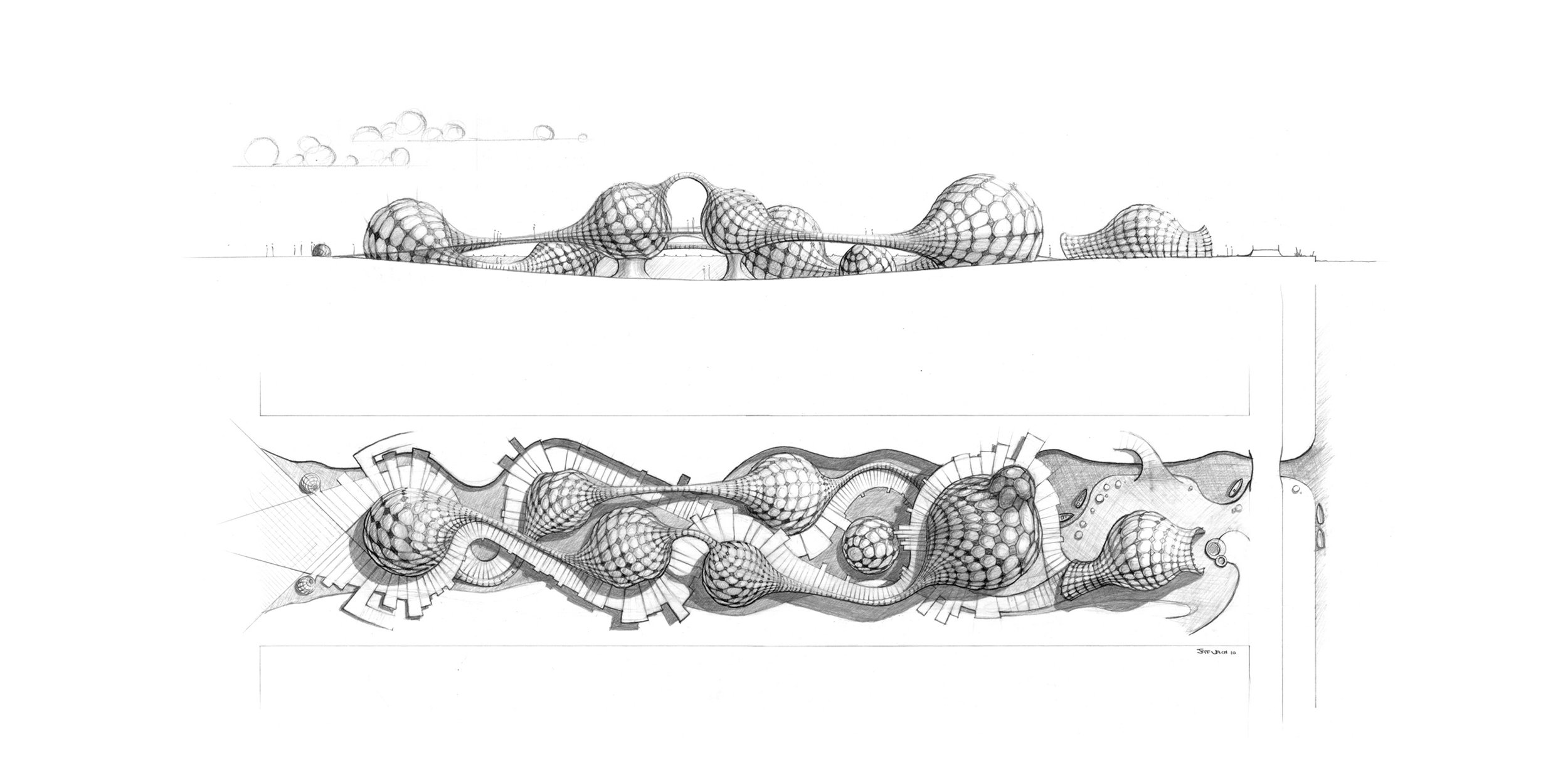
Pavilion USA
The objective of this studio project was to design a United States Pavilion for the 2015 Milan Worlds Fair. To brand America optimistically, the pavilion experience was crafted to highlight the most recent and near-future innovations that are propelling US technological industries toward more meaningful and sustainable production. For this experience to be authentic, the structure was designed to be a place where visitors could experience being innovators first-hand by participating in the design process directly.
Proposal:
Because of the Fair’s theme of “feeding the world”, water containment was chosen as the subject of innovation. In composition, the pavilion would consist of two exterior pathways intertwined with a continuous but spatially oscillating tube, within which CNC machines and robots sequentially sculpt clay into water vessels. The visitors would interact with the machines to customize a vessel as they progressed along one of the two paths. Due to the specific parameters that they would interact with, visitors would experience all of the stages of innovation including risk taking, failure and success along the way. A laboratory full of invited Innovators using the quick feed-back-loop of the pavilion’s rapid prototyping equipment to advance ceramics and water storage technology would add intrigue. At the final stage, visitors would find fresh water to enjoy and receive their vessel, which they could choose to take home or donate. Donation would give them the opportunity to strive for a better design by going through the pavilion again.
The structure would be a steel frame that supports glass and ceramic panels. Visitors would walk outside along the path and look through glass panels at the machines similar to viewing fish at an aquarium. The section shows the progression of the machine pods that visitors interact with and a two story laboratory at the end.
This project was carried out entirely in analog, free-hand drawings to continue to test an important aspect of a developing design process - the ability to conceptualize complexities based on thematic inspiration without relying on computational representation. Further development of this concept would entail a full computation and material feed-back-loop exercise to provide the reality necessary to truly express the theme.








